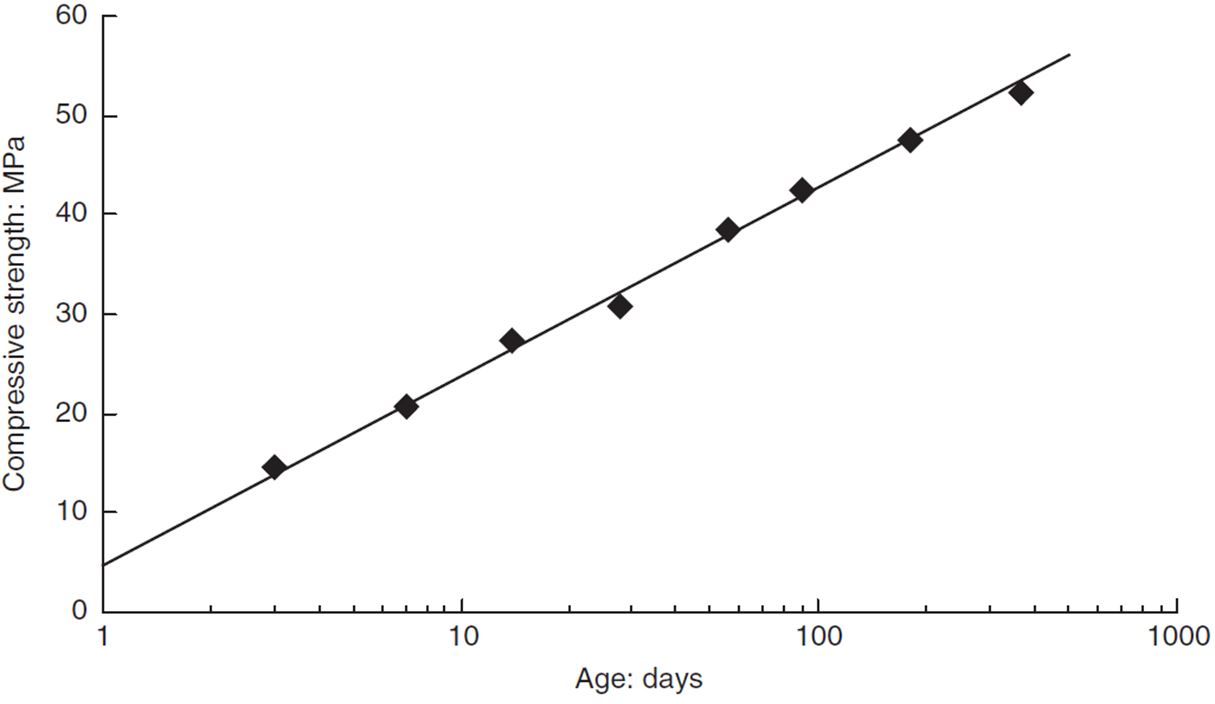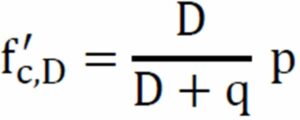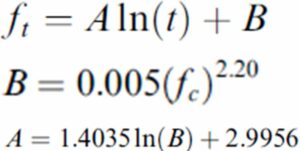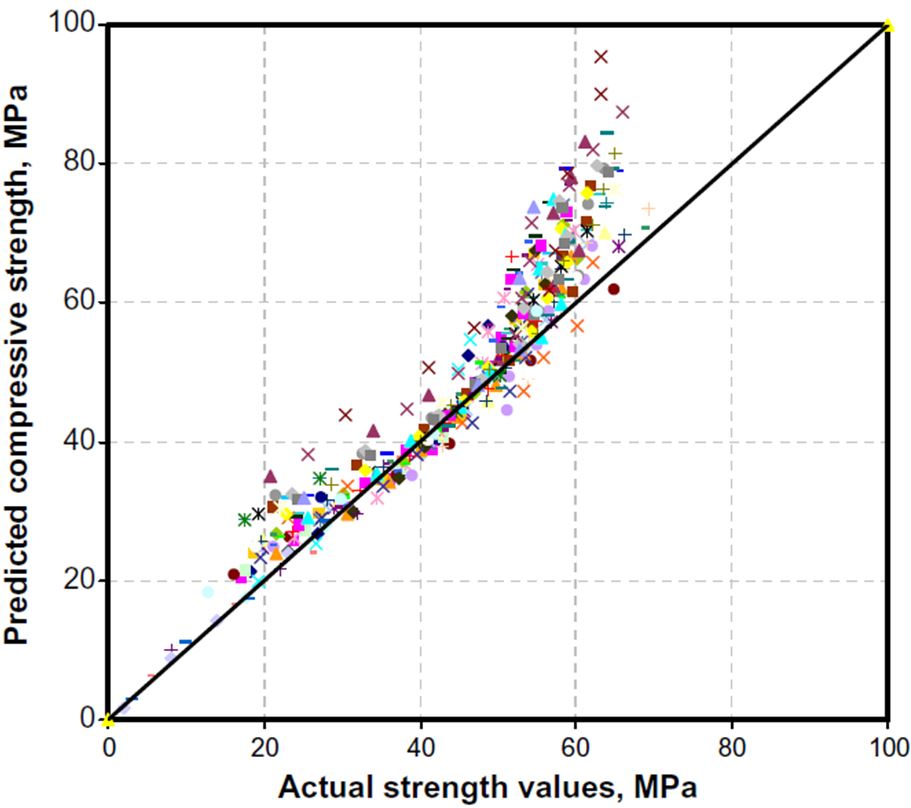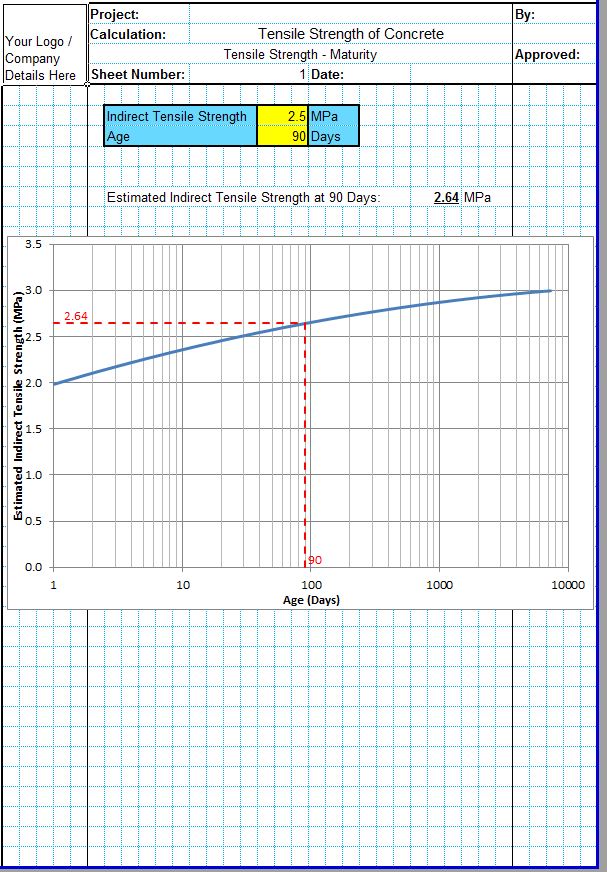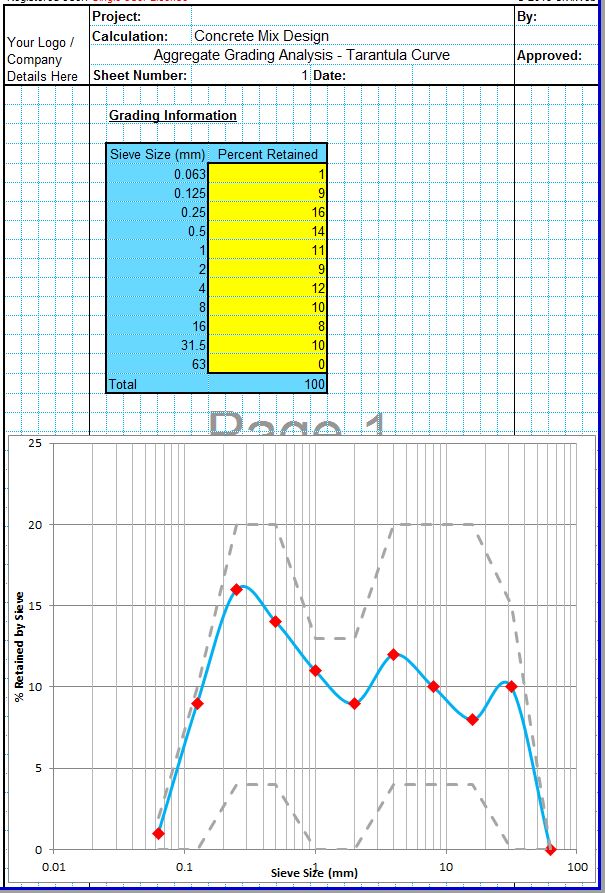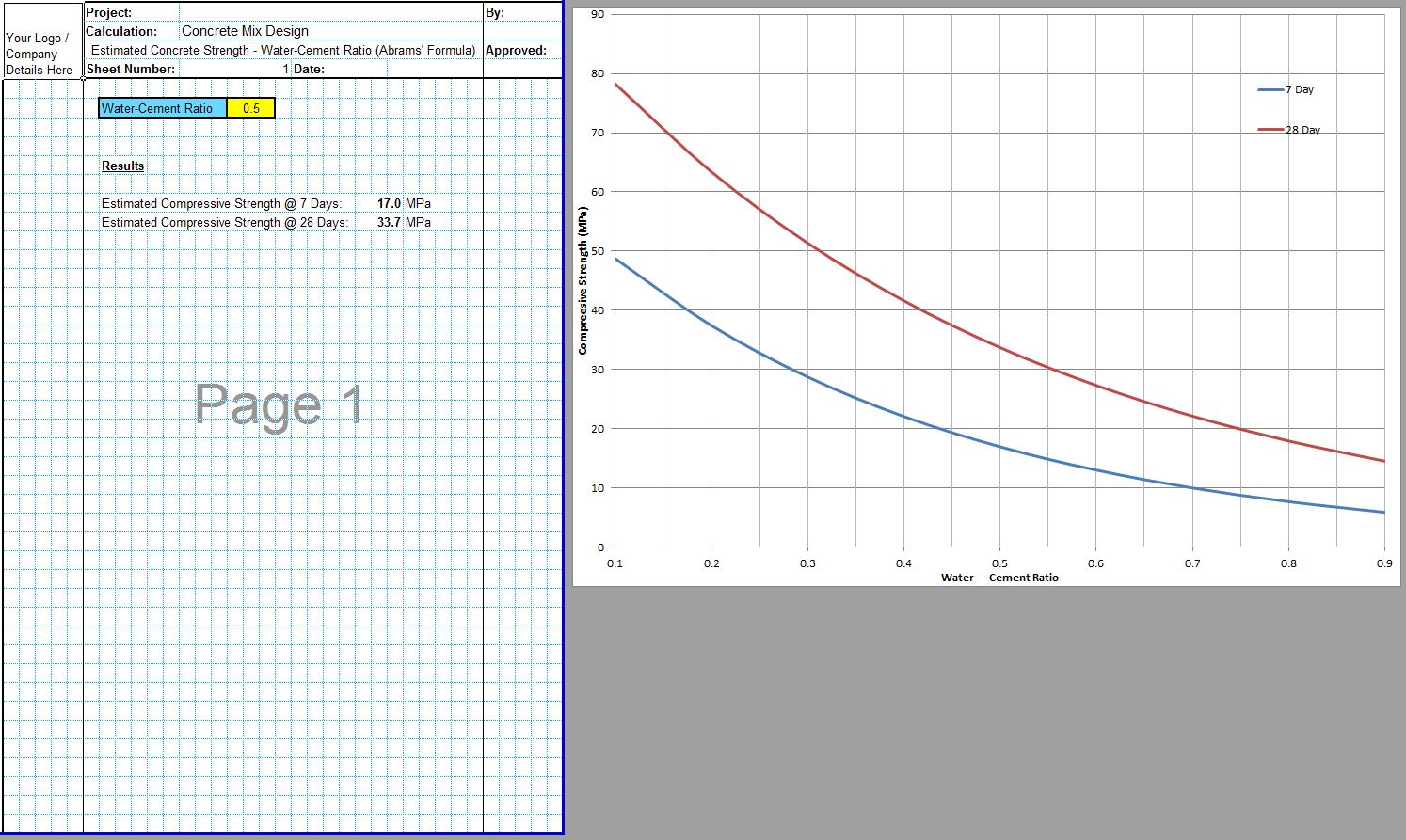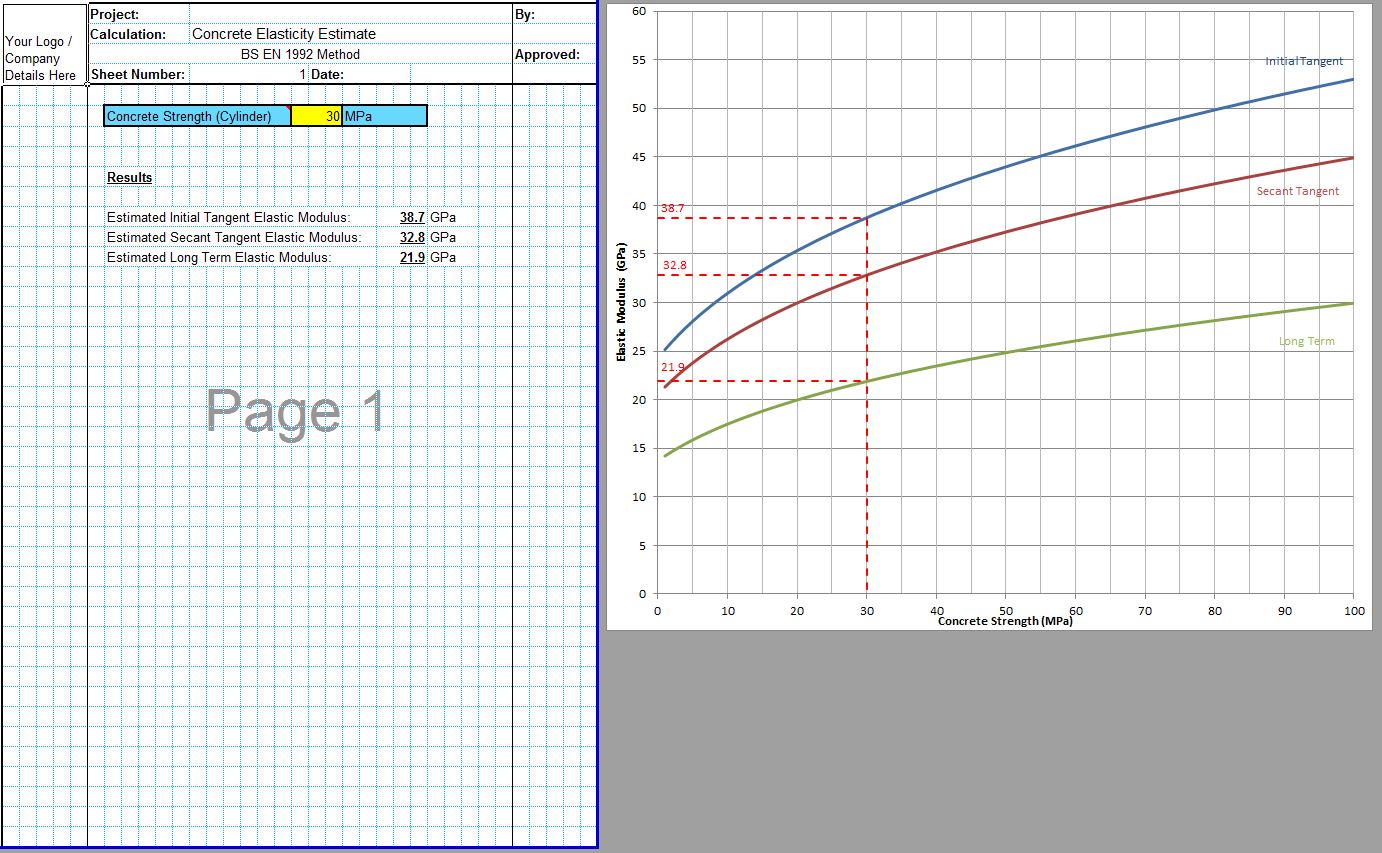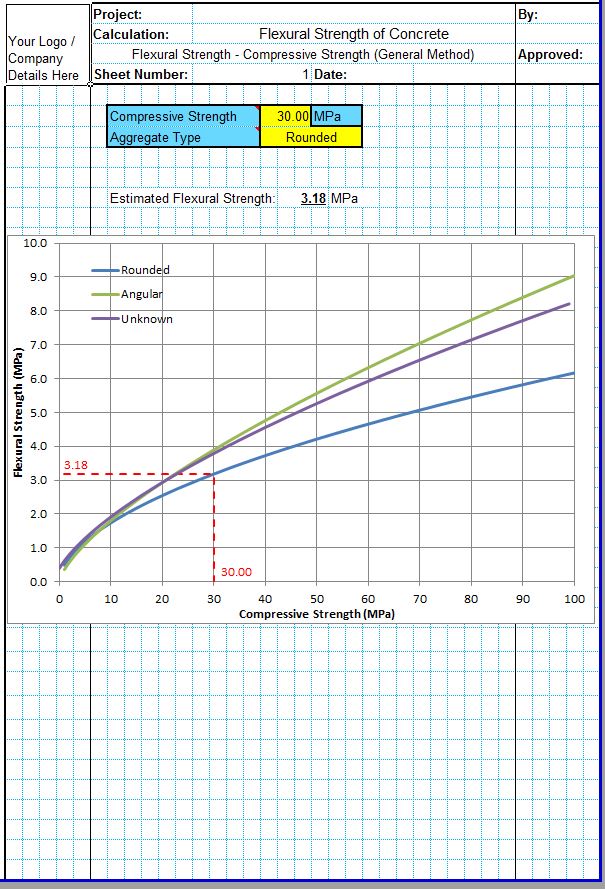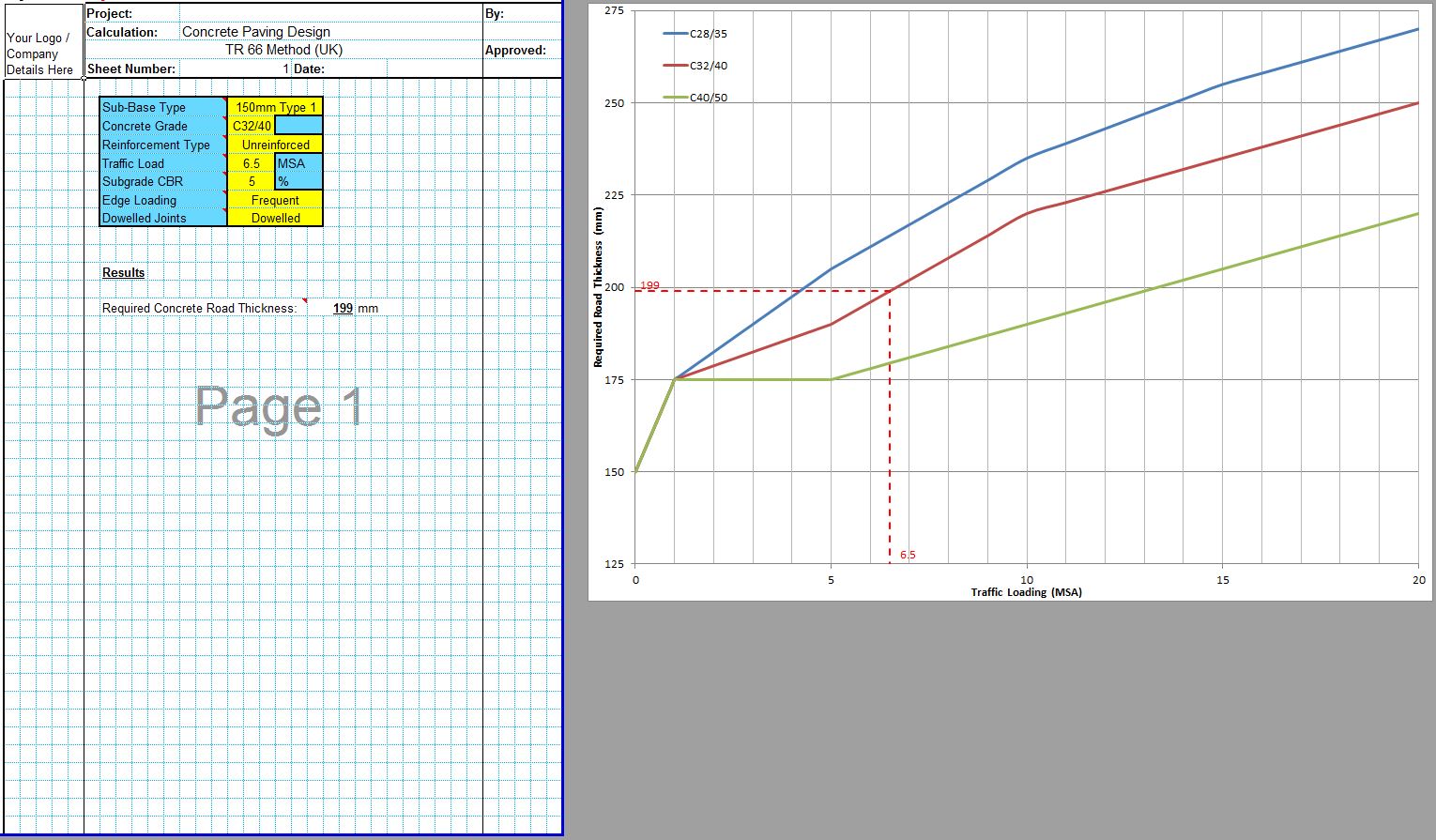Concrete strength at 7 days is often measured even though the specified compressive strength of concrete is measured at 28 days. It is often necessary to measure the compressive strength of concrete at 7 days and 28 days which is why a number of concrete cube samples are taken during the pour.
There are a number of methods which can be used to estimate the required compressive strength of concrete at 7 days. The most popular methods are described below. The CivilWeb Concrete Strength at 7 Days spreadsheet has been designed to complete this analysis using three methods. The concrete strength gain curve can be estimated using either two concrete cube test results or estimated from the specified compressive strength at 28 days using two methods.
Concrete Strength at 7 days
The compressive strength of concrete at 7 days is often required for two reasons. Firstly it may be necessary to begin loading a concrete member after only around a week in order to meet the construction programme. This is common in multistorey buildings where one floor will need to be loaded in order to complete the next, or in concrete roads and pavements which need to be opened to traffic as soon as possible to minimize disruption.
The second reason is so that the quality of the concrete can be checked without having to wait 28 days. A favourable concrete cube strength test result after 7 days gives a good indication that the concrete will satisfy the specified compressive strength of the concrete.
Maturity Concept of Concrete
Concrete gains strength due to the ongoing cement hydration process. Concrete will gain strength from the moment it is placed and starts to hydrate. Much of this strength gain will occur in the first few days after placement but the slower chemical reactions will continue for many years after placement, particularly if the concrete has access to moisture from the air for example.
Characteristic compressive strengths are usually specified assuming a 28 day compressive strength. In many applications 28 day strength hits a sweet spot, long enough for the concrete to gain most of it’s strength but before it is expected to accommodate significant load.
In some cases however 28 days may be much too long to wait before the quality of the concrete is known. This happens when a concrete road for example needs to be opened a week or so after pouring or where the strength of a concrete beam needs to be utilized in order to construct the next level in a building. In these cases an assessment of the suitability of the concrete will need to be estimated from concrete cube testing at a much earlier age. This often occurs at 7 or 14 days but can be as early as 3 days. In order for these results to be meaningful, a maturity relationship needs to be developed using a concrete maturity method such as those described below to relate early age and 7 day compressive strength test results with the specified 28 day strength.
Concrete Maturity Testing
Concrete maturity testing can be undertaken using the same concrete cube tests as are used for general compressive strength tests and compliance testing. Maturity testing usually includes for 3 days, 7 days cube strength and 28 days. If required the maturity testing can include longer periods of 60 or 90 days. Further information on measuring the concrete strength at 7 days is included in our Concrete Cube Test post.
Concrete Strength Gain Curves
The results from the concrete maturity testing are then translated into a concrete strength gain curve for this particular concrete mix. This concrete strength gain curve can then be used to estimate the long term compressive strength of the concrete from 7 day compressive strength results. 7 day compressive strength of concrete formula can also be developed from the concrete strength gain curves where this is deemed more appropriate than a graphical solution.
The rate of strength gain of the concrete will depend on the cementitious materials used. Ordinary Portland cement will gain strength in a manner similar to the below graph with the concrete strength after 7 days around 60% of the 28 day strength. Rapidly setting cements are available which can gain significant compressive strength in a few hours. These high early strength concretes are often used in order to open concrete road repairs quickly after placement. Conversely low heat cements and cements blended with GGBS or Fly Ash will take longer to reach their design strengths, sometimes 6 months or more. This will need to be allowed for in the specification.
Rates of strength gain are different for each mix and for this reason a concrete strength gain curve or formula should be provided by the concrete supplier or determined from long term testing of this particular concrete mix. This can then be used to evaluate early strength test results for conformity with the required strength at 28 days. A typical concrete strength gain curve (plotted on a logarithmic scale) can be seen below.
Concrete Maturity Testing – Two Test Results
If the supplier cannot provide a concrete strength gain curve or formula then an estimate can be made from two early test results. Typically one of these cube tests will be a 7 day cube strength. Concrete strength gain curves typically follow an equation similar to the below with two constants p and q.
With two early age test results such as one at 3 days and a concrete strength at 7 days, these values can be input into this equation and the two simultaneous equations can be solved using a spreadsheet program or through graphical methods. The solved equation can then be used to estimate the concrete strength at any age. The CivilWeb Concrete Strength at 7 Days spreadsheet solves this simultaneous equation and produces a concrete strength gain curve. This is used to estimate concrete compressive strengths at any age.
As with any extrapolation caution should be used when checking concrete conformity with this method. Any small inaccuracies in the test can be magnified hugely when using only two early age test results to determine the strength gain curve. The equation can be checked and fine-tuned using subsequent tests to develop a more robust concrete strength gain curve.
Concrete Strength at 7 Days from 28 Day Strength
Another method has been developed to estimate concrete strength at 7 days or at any age based on its strength at 28 days. This can be used to estimate the long term strength and performance of concrete based on a 28 day cube test result but it is more commonly used to estimate the required strengths at 7 or 14 days for concrete to satisfy a specified 28 day compressive strength.
Research shows that normal Portland cement concrete will gain strength in line with the below equations where t is the concrete age (days), fc is the compressive strength at 28 days and ft is the compressive strength at that age;
These equations have been shown to equate reasonably well with concrete compressive strengths up to around 50MPa before becoming less reliable. This effect is shown in the below graph of actual and predicted strengths using these equations.
Another general formula has been proposed in the European standard CEM Code 90 to estimate the compressive strength of concrete at 7 days and at different ages. This formula is shown below with ß = ratio with 28 day strength, T = time after construction and S is a cement factor, taken as 0.25 for normal cement and 0.38 for slow hardening cement.
The CEM Code 90 equation is more general than the previous equation and tends to give higher results for early ages and lower results for later ages. This equation is certainly more conservative for long term strengths and is preferable for this reason.
For quality control purposes slower setting concretes would require tests at 90 days and 365 days to determine the strength ratio. This would allow strengths tests to be conducted at 90 days which is the practical outer limit for many types of concrete construction. For slower setting concretes it is inevitable that some uncertainty will persist with the ultimate strength of the concrete and this should be allowed for in the design with a higher specified compliance strength.
CivilWeb Concrete Strength at 7 Days Spreadsheet
A calculator tool is included in the CivilWeb Concrete Strength at 7 Days Spreadsheet for the equations detailed above. This enables designers and contractors to estimate the required concrete strength at 7 days in order to comply with the specification. The spreadsheet is also very useful in estimating the date at which concrete of a specified 28 day strength will reach a certain minimum strength. This allows construction programmes to be timed to take advantage of early concrete strengths.
The CivilWeb Concrete Strength at 7 Days Spreadsheet can be purchased below for just £5. Alternatively the Concrete Properties Suite can be purchased for £10 which includes lots of compressive, tensile and flexural strength analysis tools. This suite is also provided for free with any purchase of the Rigid Pavement Design Suite which can be purchased for £20 including full concrete pavement design spreadsheets.
Our full Concrete Properties Suite of spreadsheets is available for only £10.
Download Free Trial Version
To try out a fully functional free trail version of this software, please enter your email address below to sign up to our newsletter.
